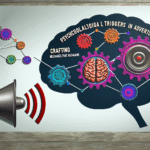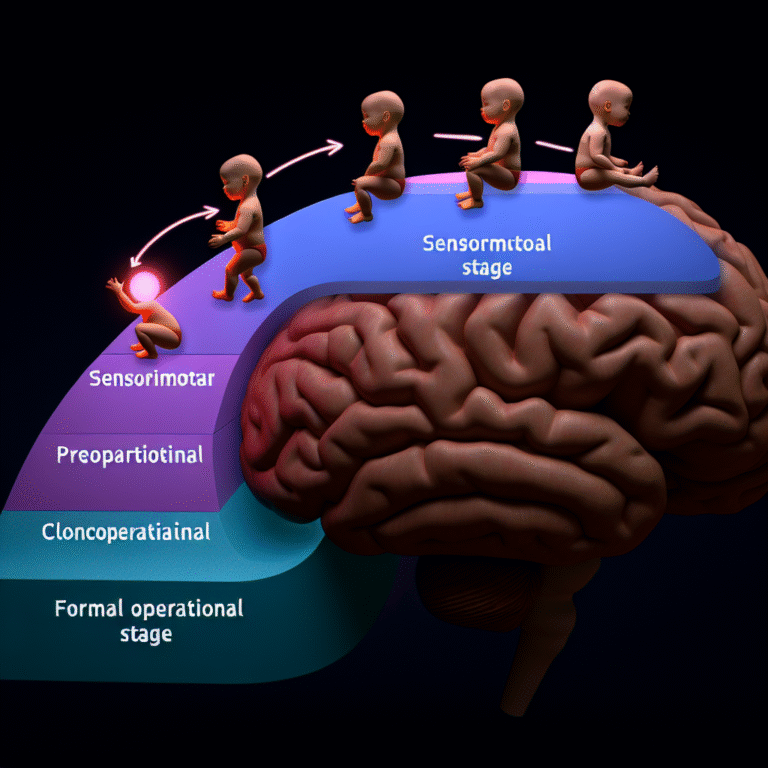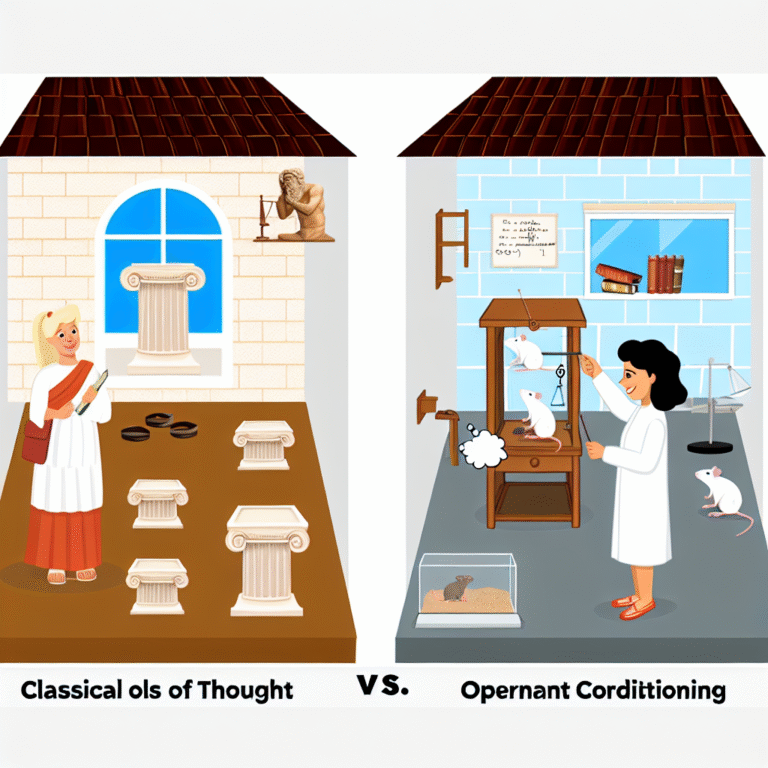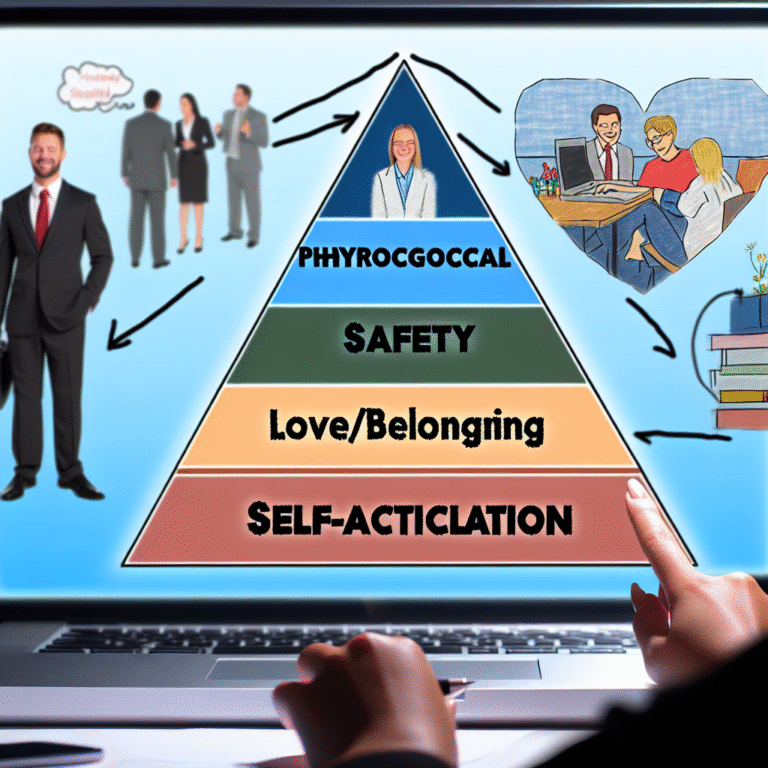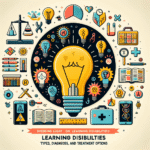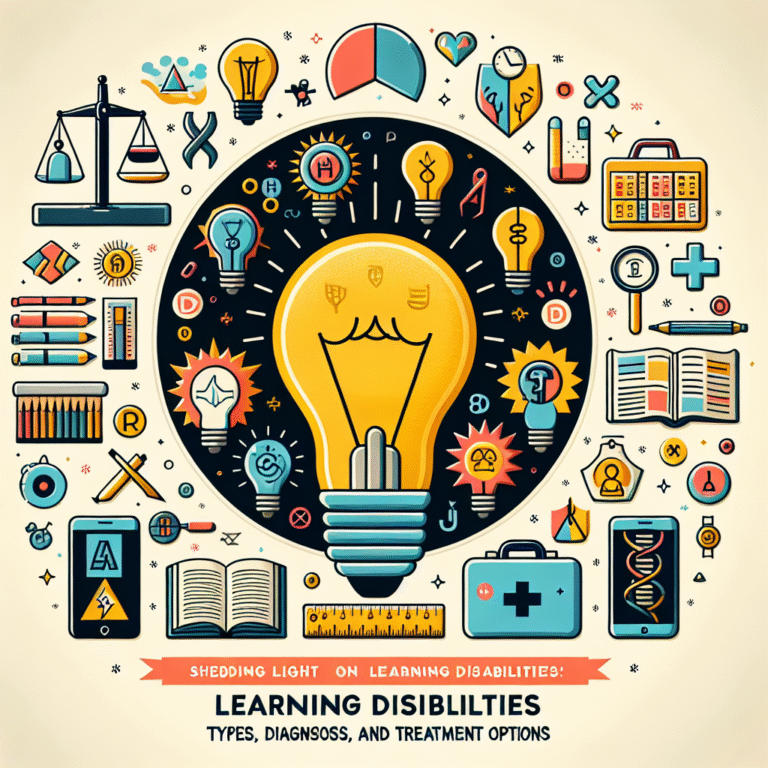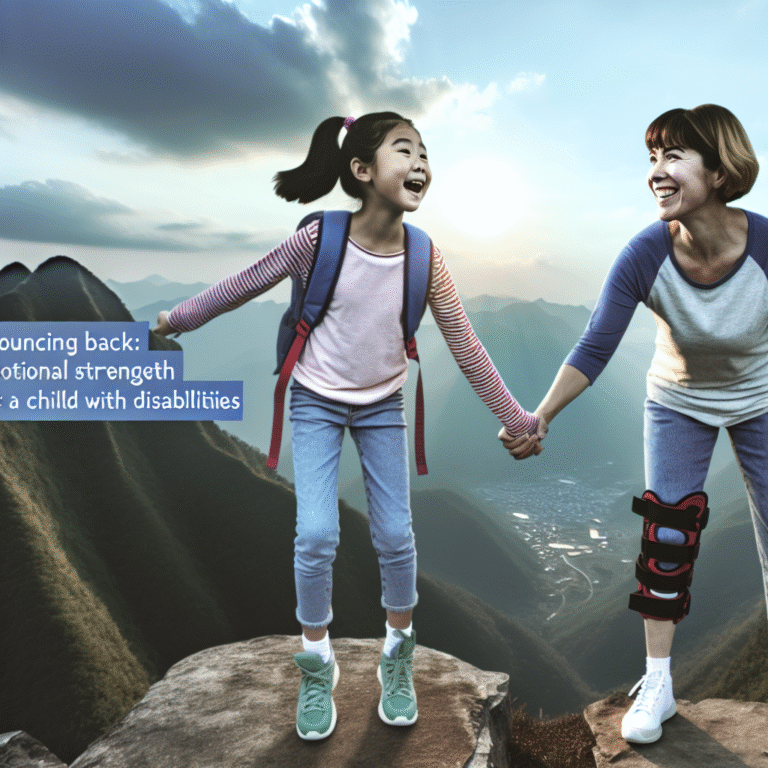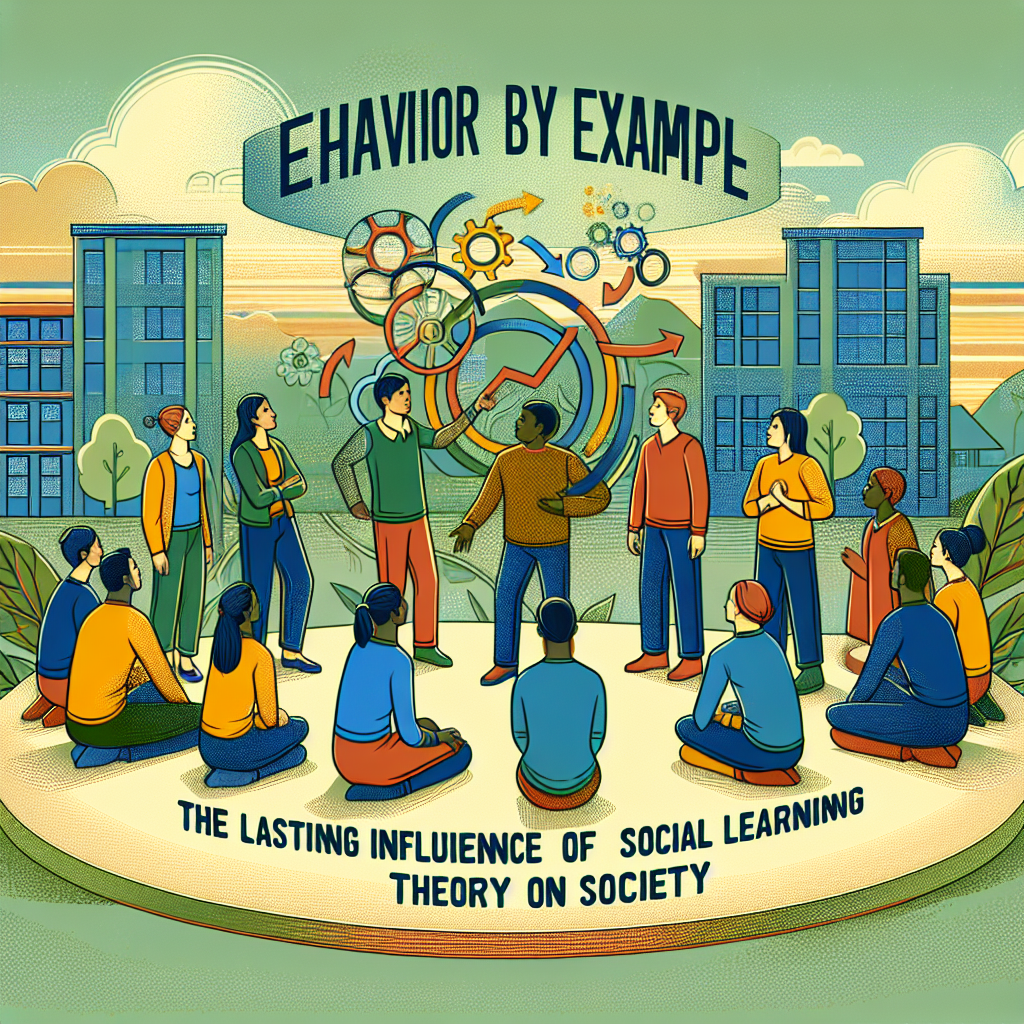
Behavior by Example: The Lasting Influence of Social Learning Theory on Society
Introduction
In a world where actions often speak louder than words, the principle of “Behavior by Example” has become an invaluable aspect of our social fabric. The idea that individuals learn not only through direct experience but also by observing others is a cornerstone of Social Learning Theory (SLT), pioneered by Albert Bandura in the 1960s. This article delves into Behavior by Example: The Lasting Influence of Social Learning Theory on Society, exploring its applications, relevance, and profound effects on individual and collective behaviors throughout history.
Imagine a child watching a parent navigate a challenging situation—perhaps resolving a conflict, overcoming a failure, or demonstrating empathy. These behaviors serve as teaching tools through which the child absorbs critical social competencies simply by observing. Bandura had it right: much of what we learn is indirect, shaping our actions, thoughts, and values in powerful ways. In this deeply interconnected world, understanding the impact of SLT becomes crucial for educators, parents, and leaders alike.
Throughout this article, we will examine the implications of Behavior by Example: The Lasting Influence of Social Learning Theory on Society from various angles, incorporating real-world case studies and actionable insights that will empower readers to harness the principles of SLT in their own lives. Let’s embark on this enlightening journey!
The Foundation of Social Learning Theory
Social Learning Theory posits that behavior is learned socially through the observation of others, particularly in conjunction with concepts such as imitation and modeling. Bandura’s framework identifies four essential components in the social learning process:
- Attention: The observer must pay attention to the model demonstrating the behavior.
- Retention: The observer must be able to remember the behavior once they’ve seen it.
- Reproduction: The observer must have the capability to replicate the behavior.
- Motivation: The observer must want to imitate the behavior, influenced by past experiences or observed rewards.
Key Principles of SLT
The implications of SLT extend into various aspects of society. Whether in education, parenting, or media consumption, the principles of Social Learning Theory contribute to our understanding of human behavior:
- Modeling: Individuals learn from role models and peers.
- Reinforcement: Positive consequences strengthen learned behaviors, while negative consequences do the opposite.
- Reciprocal Determinism: Personal, behavioral, and environmental factors all interact in the learning process.
To illustrate these principles, consider Table 1 below:
| Component | Explanation | Example |
|---|---|---|
| Attention | Noticing a behavior being modeled | A child sees a parent helping others. |
| Retention | Recollecting the observed behavior | The child remembers the act of kindness. |
| Reproduction | Ability to imitate the behavior | The child helps a peer who is struggling. |
| Motivation | Willingness to perform the behavior | The child enjoys the positive feedback from friends. |
Case Study: Bandura’s Bobo Doll Experiment
One of the most compelling demonstrations of SLT is Bandura’s Bobo doll experiment. The study observed children who watched adults behaving aggressively towards a Bobo doll. The results were striking—children who observed violent behavior were more likely to act aggressively towards the doll themselves. This experiment became the quintessential representation of Behavior by Example: The Lasting Influence of Social Learning Theory on Society, demonstrating how readily individuals could adopt behaviors simply by observing them in others.
Social Learning Theory in Education
In educational settings, Behavior by Example: The Lasting Influence of Social Learning Theory on Society plays a significant role. Students often look to teachers and peers for cues on how to behave, engage, and learn. The implications are profound:
Implementing Social Learning in Classrooms
Educators can harness SLT principles to foster a positive learning environment:
- Peer Mentoring: Older or more adept students can model behaviors for younger peers, promoting collaboration and confidence.
- Demonstration: Instructors can demonstrate problem-solving techniques or social interactions, allowing students to learn through observation.
- Feedback and Reinforcement: Providing positive reinforcement encourages students to adopt desired behaviors.
Case Study: The Peer Mentor Program
A notable case is the Peer Mentor Program, established in multiple schools to enhance social interaction among students. The program pairs older students with younger ones, where mentors model effective communication, study skills, and social behavior. As a result of observing their peers, younger students improved academically and socially, illustrating the core principles of Behavior by Example: The Lasting Influence of Social Learning Theory on Society.
Parenting Practices and SLT
Parents serve as the first role models in their children’s lives, making the principles of Social Learning Theory vital in shaping future behaviors.
Parental Influence
- Observational Learning: Children emulate their parents’ interactions, habits, and emotional responses.
- Communication Styles: The way parents communicate—both verbally and non-verbally—influences how children express themselves.
Case Study: Parenting Styles and Child Behavior
A longitudinal study focusing on different parenting styles found that authoritative parents, who model respect and autonomy, lead to children who exhibit high self-esteem and social competence. In contrast, children of authoritarian parents were more likely to be withdrawn and exhibit behavioral issues. This demonstrates the profound impact of Behavior by Example: The Lasting Influence of Social Learning Theory on Society as children learn to navigate social dynamics based on their observations of parental behavior.
Modeling Emotional Intelligence
Parents who openly express their emotions and manage conflicts constructively provide their children with a template for emotional intelligence. Such modeling not only aids children in understanding their feelings but also equips them with tools for healthy interpersonal relationships.
Media’s Role in Social Learning
In the digital age, media plays a pivotal role in shaping behavior, making the application of Social Learning Theory particularly relevant.
The Power of Media
From television shows to social media platforms, the content consumed by individuals often acts as a significant source of modeling behavior. This is particularly influential among children and adolescents, who are impressionable and eager to emulate what they see on screen.
Case Study: The Influence of Social Media
Research indicates a correlation between social media exposure and behavior patterns in teens. For instance, platforms that promote body positivity and healthy lifestyles can encourage similar behaviors among users. Conversely, media that glorifies negative behaviors—such as bullying or substance abuse—can lead to imitation.
Combatting Negative Influences
To combat the harmful effects of negative modeling in media, parents and educators can:
- Curate media consumption by discussing content and its implications.
- Encourage critical thinking, allowing children to evaluate the behaviors they observe.
The Business and Organizational Impact of SLT
Organizations can leverage the principles of Social Learning Theory to enhance workplace culture and employee performance.
Leadership and Modeling
Leaders who embody the values and behaviors they wish to see in their teams—such as accountability, integrity, and collaboration—set a powerful example. This modeling fosters an organizational culture where employees feel encouraged to replicate these behaviors.
Case Study: Transformational Leadership at Company X
Company X implemented a transformational leadership model, wherein leaders actively modeled the desired behaviors and ethics of the organization. Employees were shown their leaders engaging in team-building and ethical decision-making processes. As a result, the organization experienced a marked improvement in employee engagement and performance metrics, encapsulating Behavior by Example: The Lasting Influence of Social Learning Theory on Society in a corporate context.
Training Programs and Social Learning
Incorporating social learning into training programs—through webinars, workshops, and mentorship—profoundly impacts knowledge retention and application. Employees learn from each other through shared experiences and collaborative environments, essential for fostering innovation.
Conclusion
The lasting influence of Social Learning Theory is undeniable and extensive. From shaping our actions as children to defining professional standards in the workplace, the concept of Behavior by Example serves as a central tenet for inter-personal interactions across various domains of society. The principles of SLT provide a framework for understanding how we learn from others, allowing us to cultivate more empathetic, responsible, and successful communities.
Actionable Insights
- Model Positive Behaviors: Whether in your home, classroom, or workplace, demonstrate the behaviors you want to inspire in others.
- Encourage Observational Learning: Create environments where peer learning can thrive, enhancing skills and building confidence.
- Address Media Consumption: Engage in discussions about media portrayals, fostering critical analysis and healthy behavioral modeling.
By understanding and applying the principles of Behavior by Example: The Lasting Influence of Social Learning Theory on Society, we can create spaces that encourage positive interactions and learning. Let’s embrace the power of observation and modeling to shape a better future for all.
FAQs
1. What is Social Learning Theory?
Social Learning Theory, developed by Albert Bandura, posits that people learn behaviors through the observation of others, emphasizing the importance of modeling, imitation, and social reinforcement.
2. How can parents apply SLT in parenting?
Parents can model positive behaviors, engage in open communication, and provide constructive feedback to foster social learning in their children.
3. What role does media play in social learning?
Media influences behavior by providing models for imitation; positive media portrayals can encourage healthy habits, while negative portrayals can lead to harmful behaviors.
4. Can SLT be applied in the workplace?
Yes! Organizations can utilize SLT by fostering a culture of modeling and mentorship, enhancing employee engagement and behavior.
5. How can educators use SLT in classrooms?
Educators can implement peer mentoring programs, demonstrate effective learning behaviors, and provide feedback to encourage positive observational learning among students.
In embracing the foundational principles of Behavior by Example: The Lasting Influence of Social Learning Theory on Society, we have an incredible opportunity to shape the behaviors and attitudes of future generations, fostering a more interconnected and compassionate world.

